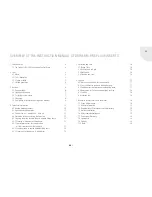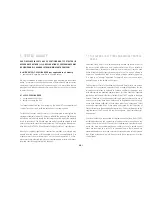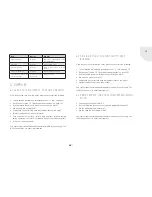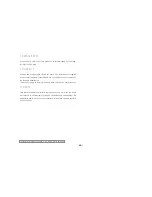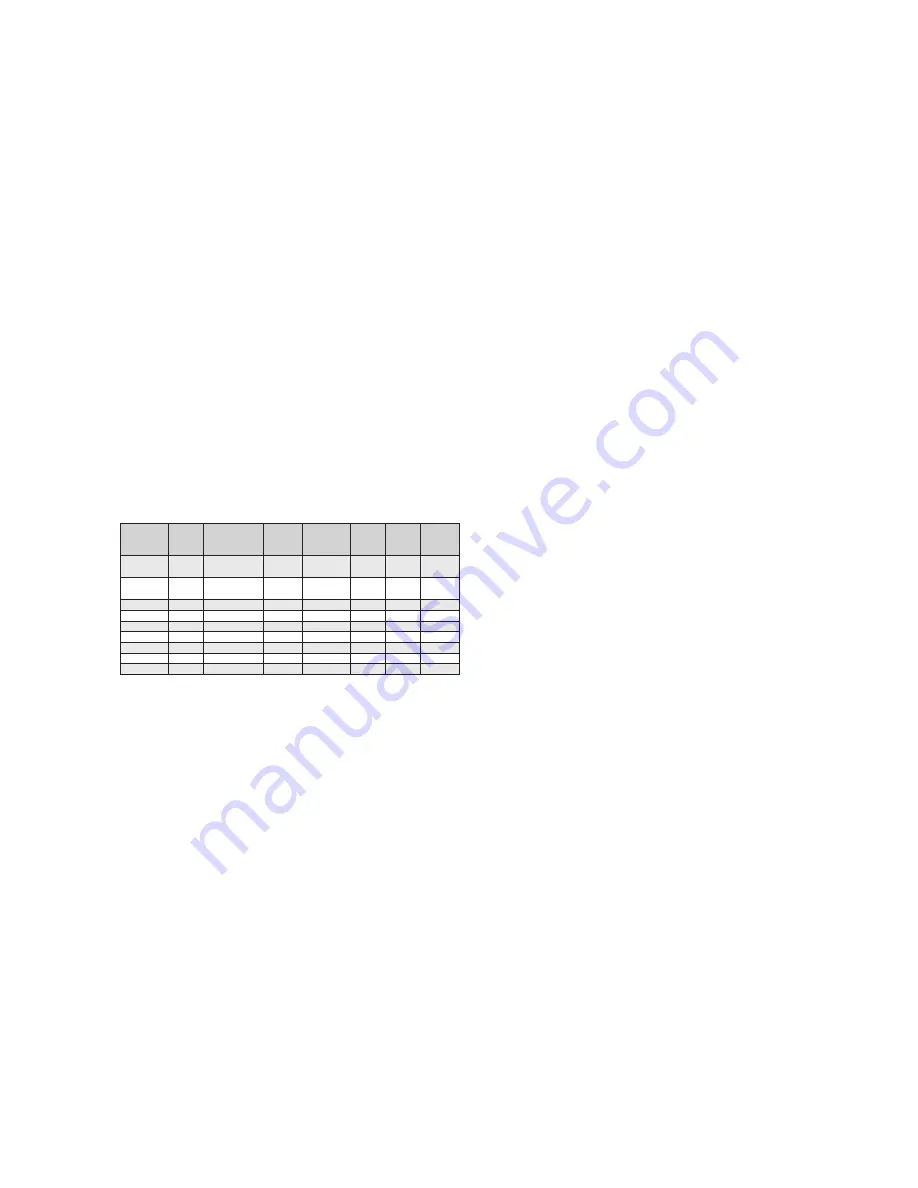
GB
6
Under no circumstances burn:
• Wet wood, bark scraps or nut husks
• Chipboard or coated or uncoated board materials
• Paper, cardboard and rags
• Plastics and foam material
• Wood treated with preservatives
• Any solid or liquid wood treatment agents
• Flammable liquids
2.1.3 WOOD QUANTITIES
Nominal heat
output kW
Rate of
loading**
kg/h
Rate of loading
using wood bri-
quettes kg/h
Type*
Type*
Type*
Type*
Type*
21
***
–
–
Varia 1V
H
2
O XXL
–
–
–
14
***
–
–
Varia 1V
H
2
O XL
–
–
–
11
4,0 (4,5)
3,2
–
Speedy
Varia
Arte
Ambiente
10
4,0
3,2
Mini Z1
Speedy
–
Arte
Ambiente
9
3,5
2,8
–
Speedy
–
Arte
Ambiente
8
3,0
2,4
–
Speedy
–
Arte
Ambiente
7
2,5
2,0
Mini
Speedy
–
–
Ambiente
6
2,5
2,0
Mini
–
–
–
–
a
2,0
1,6
–
–
–
–
–
**
* applies to closed operation, depending on type model
*
** applies only after first re-loading, may be 30 % more on first lighting
*** use the specifications in the additional installation and operating instructions for water-containing fire-
place inserts if the nominal heat output of your fireplace insert is not listed with water heat exchanger
included.
Wood briquettes pursuant to § 3 BlmSchV [Federal Immissions Control Act] may also be used. This includes
compacted natural wood in the form of wood briquettes acc. to DIN 51731 (Oct. 1996).
1 kg Beech = approx. 1 split log with L = 0.33 m; ~ Ø 0.10 m. The circum-
ference of individual logs should not exceed 30 cm. The fireplace insert or
fireplace may be damaged if the quantity loaded is consistently exceeded
by more than 30 %. Loading considerably less than the recommended quan-
tity of wood will reduce the temperature in the fire chamber and lead to
inadequate burning down and sooted panes. Do not load less than 70 % of
the recommended wood quantity. Consult the offer by your specialist dealer
or contact us for the EN-tested nominal heat output of your fireplace insert
type and model.
Note for use in smoke control area.
The maximum amount of fuel specified in this manual should not be
exceeded, overloading can cause excess smoke.
3. BURNING
3.1 FIRST OPERATION
• Check whether all the documents and accessories for the fireplace
insert were removed from the fire chamber.
• The enclosed heat protection glove is exclusively designed to activate
the operating handle and the “cold hand”. The glove is not fire resistant!
• Thoroughly familiarize yourself with fuels and other relevant topics dis-
cussed in your Instruction Manual. (“2.1 Wood“ on page 5)
• The first operation of the apparatus should be in coordination with the
installer or, better still, together with the installer. To prevent cracks or
damage, all the cladding must be dry.
• Unless you have an external supply of air for combustion, you should
allow for adequate exchange of air in the installation room to prevent
pressure reduction in the room and entry of toxic flue gases. ATTENTION!
The danger of pressure reduction also exists in the case of controlled
ventilation and extraction of air, WC extraction and extractor hoods.
• For optimal lighting, follow Section “3.2 Lighting and heating“ on page 7.
• When burning for the first time after installation, increase the tempera-
ture slowly and then burn 100 % to reach the highest temperature.
• This first burning will cause unpleasant odours. This is where the cor-
rosion coating of the fireplace insert burns into the surface of the steel.
Although the smell is unpleasant, it poses no health risk. You should
therefore ensure that the installation room is adequately ventilated.



